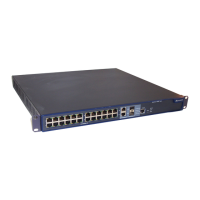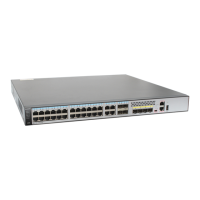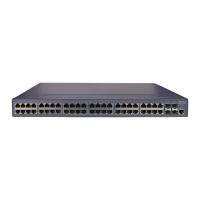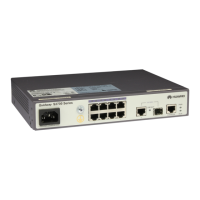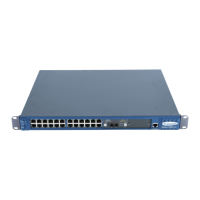Quidway S1700 Series Ethernet Switches
Web User Manual 7 Spanning Tree Algorithm
Issue 01 (2011-11-17) Huawei Proprietary and Confidential
Copyright © Huawei Technologies Co., Ltd
55
Table 7-3 Parameters of STP
Title Description
Interface Displays a list of ports or trunks.
Admin Edge
Status for all
ports
Since end nodes cannot cause forwarding loops, they can pass directly
through to the spanning tree forwarding state. Specifying Edge Ports
provides quicker convergence for devices such as workstations or
servers, retains the current forwarding database to reduce the amount of
frame flooding required to rebuild address tables during reconfiguration
events, does not cause the spanning tree to initiate econfiguration when
the interface changes state, and also overcomes other STP-related
timeout problems. However, remember that Edge Port should only be
enabled for ports connected to an end-node device. (Default: Enabled)
z
Enabled – Manually configures a port as an Edge Port.
z
Disabled – Disables the Edge Port setting.
Spanning Tree Enables/disables STP on this interface. (Default: Enabled)
Priority Defines the priority used for this port in the Spanning Tree Protocol. If
the path cost for all ports on a switch are the same, the port with the
highest priority (i.e., lowest value) will be configured as an active link in
the Spanning Tree. This makes a port with higher priority less likely to
be blocked if the Spanning Tree Protocol is detecting network loops.
Where more than one port is assigned the highest priority, the port with
lowest numeric identifier will be enabled.
z
Default: 128
z
Range: 0-240, in steps of 16
Admin Path Cost This parameter is used by the STP to determine the best path between
devices. Therefore, lower values should be assigned to ports attached to
faster media, and higher values assigned to ports with slower media.
Note that path cost takes precedence over port priority. (Range: 0 for
auto-configuration, 1-65535 for the short path cost method3,
1-200,000,000 for the long path cost method)
Admin Link Type The link type attached to this interface.
z
Point-to-Point – A connection to exactly one other bridge.
z
Shared – A connection to two or more bridges.
z
Auto – The switch automatically determines if the interface is
attached to a point-to-point link or to shared media. (This is the
default setting.)
Root Guard STP allows a bridge with a lower bridge identifier (or same identifier
and lower MAC address) to take over as the root bridge at any time.
Root Guard can be used to ensure that the root bridge is not formed at a
suboptimal location. Root Guard should be enabled on any designated
port connected to low-speed bridges which could potentially overload a
slower link by taking over as the root port and forming a new spanning
tree topology. It could also be used to form a border around part of the
network where the root bridge is allowed. (Default: Disabled)
Admin Edge Por Refer to “Admin Edge Status for all ports” at the beginning of this
section.
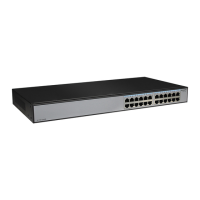
